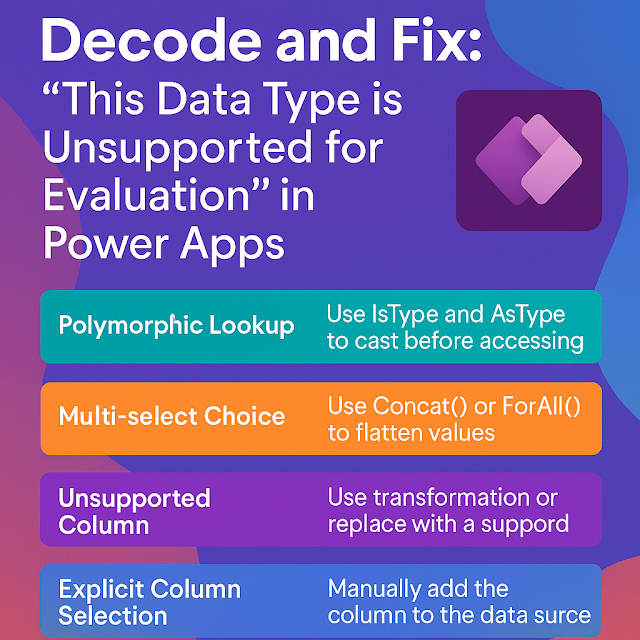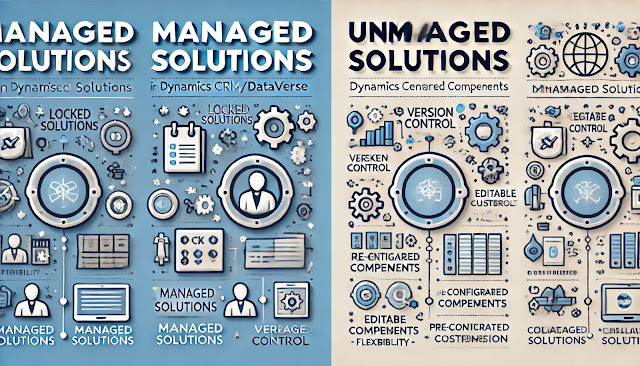Dynamics 365 Field Service : Create task-specific canvas apps and custom pages
Field technicians are the backbone of any service-centric organization. But their success depends on having the right tools at their fingertips—tools that adapt to their unique tasks and environments.
This is where Canvas Apps and Custom Pages in Microsoft Power Platform come into play. Let’s explore how they revolutionize Dynamics 365 Field Service by delivering task-specific, flexible user experiences.
Why Canvas Apps and Custom Pages in Field Service?
While Dynamics 365 Field Service offers powerful out-of-the-box features, real-world field operations often demand:
- A tailored interface showing only relevant fields and actions
- Offline support in areas with poor connectivity
- Seamless integration with external systems like IoT devices or ERP systems
- Mobile-optimized UIs for technicians on the go
Real-World Scenario
Imagine a technician repairing an HVAC system at a remote site:
- They need a simplified screen showing only the work order, asset details, and diagnostic IoT data.
- A complex model-driven form isn’t practical here.
This is where Canvas Apps and Custom Pages shine.
What Are They?
Canvas Apps
Canvas Apps let you build highly customized, pixel-perfect apps using a drag-and-drop interface in Power Apps.
- Full control over UI
- Connect to multiple data sources (Dataverse, SharePoint, APIs)
- Ideal for mobile scenarios with offline capability
Custom Pages
Custom Pages are designed for embedding into model-driven apps (like Field Service). They combine the structured model-driven experience with the flexibility of Canvas Apps.
- Seamlessly fits in Field Service UI
- Great for dashboards, step-by-step wizards, or editable grids
- Lightweight but not offline-capable yet
Developer Deep Dive: Building Task-Specific Apps
Use Case: “Parts Return” Canvas App
A technician needs to return unused parts after completing a job.
Step 1: Create the Canvas App
1. Go to Power Apps > Create > Canvas App (Phone layout).
2. Connect to Dataverse entities: Work Orders, Products, Returns.
Step 2: Design the UI
Gallery: Show all Work Orders assigned to the logged-in technician.
Form: Capture part return details (reason, quantity).
Button: Submit return using Power Fx `Patch()` function.
PowerFx
Patch(Returns, Defaults(Returns), {
WorkOrder: SelectedWorkOrder,
Product: SelectedProduct,
Quantity: ReturnQuantity,
Reason: txtReason.Text
})
Step 3: Add Business Logic
- Validate stock levels before submission
- Show success/failure notifications with `Notify()`
Step 4: Deploy
- Publish and share with technicians
- Embed in Field Service Mobile for easy access
Architect View: Using Custom Pages
Custom Pages are ideal when the task-specific UI needs to live inside the model-driven app.
Steps:
1. Open your Field Service App in Power Apps.
2. Add Page → Select Custom Page.
3. Design UI in Power Apps Studio with Dataverse-bound components.
4. Publish and test directly within the Field Service app.
Best Practices
Keep It Lightweight
For mobile scenarios, minimize controls and data calls.
Role-Based UI
Show/hide sections using security roles or Power Fx.
Offline Support
Use `SaveData()` and `LoadData()` for caching in Canvas Apps.
Reusability
Leverage component libraries for headers, footers, buttons.
Why It Matters for Field Service
By embedding task-specific apps into Dynamics 365 Field Service:
- Technicians stay focused with simplified UIs
- Teams handle offline tasks effectively
- Organizations unlock higher productivity & faster service delivery
Closing Thoughts
Canvas Apps and Custom Pages give you the flexibility and precision needed to deliver great field experiences. Whether you’re a developer building integrations or an architect designing workflows, these tools help you create modern, adaptive solutions for your organization.












Comments
Post a Comment